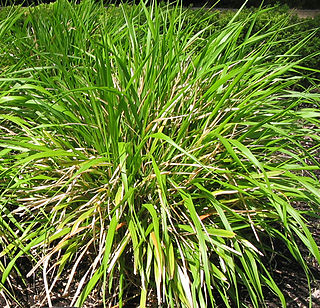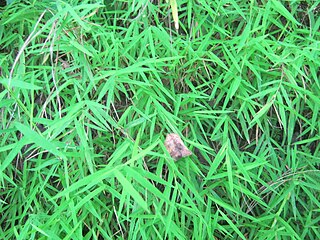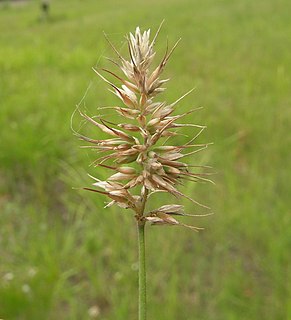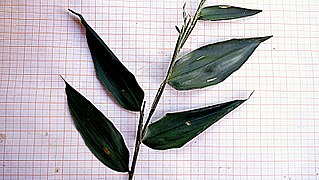| Gynerium | |
|---|---|
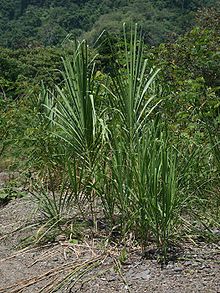 | |
| Scientific classification | |
| Kingdom: | Plantae |
| Clade: | Tracheophytes |
| Clade: | Angiosperms |
| Clade: | Monocots |
| Clade: | Commelinids |
| Order: | Poales |
| Family: | Poaceae |
| Clade: | PACMAD clade |
| Subfamily: | Panicoideae |
| Tribe: | Gynerieae Sánchez-Ken & L.G. Clark (2001) |
| Genus: | Gynerium Willd. ex P. Beauv. 1812 not Bonpl. 1813 [1] |
| Species: | G. sagittatum |
| Binomial name | |
| Gynerium sagittatum | |
| Synonyms [2] | |
| |
Gynerium is a monotypic genus of Neotropical plants in the grass family, native to Mexico and Colombia, Central America, South America, and the West Indies. [3] [4] It is classified in its own tribe Gynerieae. [5]
Contents
The sole species in the genus is Gynerium sagittatum, a tall grass that grows up to six metres (twenty feet) high. It is a very vigorous species that grows into a considerably dense mass of vegetation. The species is known as "cana-do-rio", "cana-flecha", "cana-frecha", "ubá" and "cana-brava" in Brazil, "caña brava" in Peru and Colombia, "chuchío" in eastern Bolivia, and "tañil" in Guatemala and other Spanish speaking countries. It is known in English as "wildcane" [6] or "wild cane", while "arrow cane" is less common (sagitta is Latin for arrow ).


